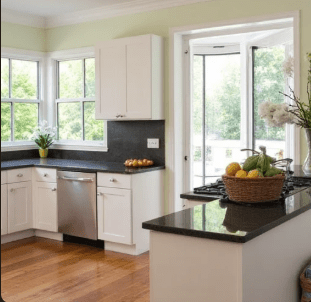Moving can be a daunting task, especially when it comes to ensuring your belongings arrive safely at your new home. One often-overlooked area of concern is the proper packing of small kitchen appliances. These items, while seemingly simple, can be easily damaged if not handled with care. Knowing how to pack small kitchen appliances effectively is crucial to minimizing stress and potential replacement costs. Therefore, let’s explore the best methods for preparing your blenders, toasters, and coffee makers for a successful move.
Preparing Your Appliances for Packing
Before you even think about boxes and packing peanuts, it’s essential to prepare your small kitchen appliances properly. This involves cleaning them thoroughly and disassembling any removable parts. Here’s a step-by-step guide:
- Unplug and Clean: Ensure the appliance is unplugged and completely cool. Clean it inside and out, removing any food residue or spills. This prevents mold growth and potential damage during transit.
- Remove Detachable Parts: Take apart any removable components, such as blender jugs, toaster trays, or coffee pots. Wrap these items individually in bubble wrap.
- Secure Cords: Coil the power cord neatly and secure it with a twist tie or rubber band. This prevents tangling and potential damage.
Choosing the Right Packing Materials
The right packing materials are essential for protecting your small kitchen appliances. Invest in sturdy boxes, bubble wrap, packing paper, and packing tape. Avoid using flimsy boxes that could easily collapse under the weight of your appliances.
Box Size Considerations
Selecting the appropriate box size is vital. The box should be large enough to accommodate the appliance and ample padding, but not so large that the appliance can shift around freely. Consider these options:
- Original Packaging: If you still have the original packaging, use it! It’s designed specifically for your appliance.
- Small to Medium-Sized Boxes: Choose a sturdy box that’s slightly larger than the appliance.
- Reinforce the Bottom: Tape the bottom of the box thoroughly to prevent it from breaking open.
Packing Your Appliances Securely
Now comes the crucial step: packing your small kitchen appliances securely. Follow these tips to ensure they arrive safe and sound:
- Wrap Individually: Wrap each appliance individually in several layers of bubble wrap. Pay particular attention to fragile areas like glass components or delicate knobs.
- Create a Cushion: Line the bottom of the box with a thick layer of packing paper or bubble wrap.
- Position Carefully: Place the wrapped appliance in the center of the box, ensuring it’s not touching any of the sides.
- Fill Empty Spaces: Fill any empty spaces with packing peanuts or more packing paper to prevent the appliance from shifting during transit.
- Seal and Label: Seal the box securely with packing tape and label it clearly with “Fragile” and “Kitchen Appliances.”
Comparison of Packing Methods
| Method | Pros | Cons |
|---|---|---|
| Original Packaging | Optimal protection, custom fit | Not always available, can take up storage space |
| Bubble Wrap & Packing Paper | Versatile, cost-effective | Requires careful wrapping, can be time-consuming |
Ultimately, understanding how to pack small kitchen appliances is an investment in the longevity of your essential kitchen tools, saving you both money and the inconvenience of replacements. By following these guidelines, you can ensure that your blenders, toasters, and coffee makers arrive safely at your new home, ready for you to whip up delicious meals and beverages.
HOW TO PACK SMALL KITCHEN APPLIANCES
Moving can be a daunting task, especially when it comes to ensuring your belongings arrive safely at your new home. One often-overlooked area of concern is the proper packing of small kitchen appliances. These items, while seemingly simple, can be easily damaged if not handled with care. Knowing how to pack small kitchen appliances effectively is crucial to minimizing stress and potential replacement costs. Therefore, let’s explore the best methods for preparing your blenders, toasters, and coffee makers for a successful move.
PREPARING YOUR APPLIANCES FOR PACKING
Before you even think about boxes and packing peanuts, it’s essential to prepare your small kitchen appliances properly. This involves cleaning them thoroughly and disassembling any removable parts. Here’s a step-by-step guide:
– Unplug and Clean: Ensure the appliance is unplugged and completely cool. Clean it inside and out, removing any food residue or spills. This prevents mold growth and potential damage during transit.
– Remove Detachable Parts: Take apart any removable components, such as blender jugs, toaster trays, or coffee pots. Wrap these items individually in bubble wrap.
– Secure Cords: Coil the power cord neatly and secure it with a twist tie or rubber band. This prevents tangling and potential damage.
CHOOSING THE RIGHT PACKING MATERIALS
The right packing materials are essential for protecting your small kitchen appliances. Invest in sturdy boxes, bubble wrap, packing paper, and packing tape. Avoid using flimsy boxes that could easily collapse under the weight of your appliances.
BOX SIZE CONSIDERATIONS
Selecting the appropriate box size is vital. The box should be large enough to accommodate the appliance and ample padding, but not so large that the appliance can shift around freely. Consider these options:
– Original Packaging: If you still have the original packaging, use it! It’s designed specifically for your appliance.
– Small to Medium-Sized Boxes: Choose a sturdy box that’s slightly larger than the appliance.
– Reinforce the Bottom: Tape the bottom of the box thoroughly to prevent it from breaking open.
PACKING YOUR APPLIANCES SECURELY
Now comes the crucial step: packing your small kitchen appliances securely. Follow these tips to ensure they arrive safe and sound:
– Wrap Individually: Wrap each appliance individually in several layers of bubble wrap. Pay particular attention to fragile areas like glass components or delicate knobs.
– Create a Cushion: Line the bottom of the box with a thick layer of packing paper or bubble wrap.
– Position Carefully: Place the wrapped appliance in the center of the box, ensuring it’s not touching any of the sides.
– Fill Empty Spaces: Fill any empty spaces with packing peanuts or more packing paper to prevent the appliance from shifting during transit.
– Seal and Label: Seal the box securely with packing tape and label it clearly with “Fragile” and “Kitchen Appliances.”
COMPARISON OF PACKING METHODS
Method
Pros
Cons
Original Packaging
Optimal protection, custom fit
Not always available, can take up storage space
Bubble Wrap & Packing Paper
Versatile, cost-effective
Requires careful wrapping, can be time-consuming
Ultimately, understanding how to pack small kitchen appliances is an investment in the longevity of your essential kitchen tools, saving you both money and the inconvenience of replacements. By following these guidelines, you can ensure that your blenders, toasters, and coffee makers arrive safely at your new home, ready for you to whip up delicious meals and beverages.
SPECIAL CONSIDERATIONS FOR SPECIFIC APPLIANCES
While the general packing principles apply to most small kitchen appliances, certain items require a little extra attention. Let’s delve into specific tips for packing some common culprits:
COFFEE MAKERS
Coffee makers, especially those with glass carafes, are notoriously fragile. Empty any remaining water and clean the carafe thoroughly. Wrap the carafe separately in multiple layers of bubble wrap and place it inside the coffee maker for added security. If the carafe doesn’t fit inside, pack it in its own separate box, surrounded by ample padding.
BLENDERS
Blenders often have sharp blades, so exercise caution when disassembling and packing them. Secure the blades in a separate, well-padded container to prevent them from damaging other items or posing a safety hazard. Wrap the blender base and the blender jar (if glass) individually in bubble wrap.
TOASTERS AND TOASTER OVENS
Remove the crumb tray from toasters and toaster ovens and clean it thoroughly. Wrap the appliance in bubble wrap, paying particular attention to the heating elements, which can be easily damaged. For toaster ovens with glass doors, add extra padding to protect the glass from shattering.
UNPACKING AT YOUR NEW HOME
The packing process is only half the battle. Unpacking your small kitchen appliances carefully is just as important. Take your time, remove the packing materials gently, and inspect each appliance for any signs of damage. Keep the original boxes and packing materials if possible, in case you need to move again in the future. Before using any appliance, make sure it is completely dry and that all parts are properly reassembled. With a little planning and care, you can ensure that your transition to your new kitchen is smooth and stress-free.


